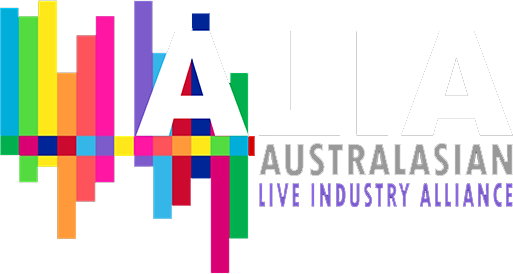


 Sound designer Reuben Hopkins of Bass Trap has worked with the producers, John X Presents, on two previous shows Rock Of Ages and We Will Rock You and the briefs are always to try and achieve rock show energy – whilst keeping musical theatre vocal clarity, and that’s what he has tried to do with The Rocky Horror Show too.
Sound designer Reuben Hopkins of Bass Trap has worked with the producers, John X Presents, on two previous shows Rock Of Ages and We Will Rock You and the briefs are always to try and achieve rock show energy – whilst keeping musical theatre vocal clarity, and that’s what he has tried to do with The Rocky Horror Show too.
For PA, Reuben used EV Mongoose EVO3 boxes for mid/highs, with Dynacord CP18-1 subs to supplement the house PA.
“So all up I have one Mongoose and one CP18-1 per side on all three levels of the house, plus I’m using the house centre cluster (Nexo Geo S), front fills (EV EVID) and delay rings (a combination of little RCF and Australian Monitor boxes), and the two house Quest HPI218S subs,” he elaborated. “I’ve been using this system in the Theatre Royal for years now. The house Nexo PS10s just lack horsepower for musicals. When we installed it the first time, we did a tune and time alignment with Smaart, and that’s all now saved in the processors, so it’s just a case of correctly placing boxes, patching in, and we’re good to go. It also has to be a point source system in the Theatre Royal as the size and shape of the room is not conducive to line array use (besides the little centre cluster hang).”
Monitors for the band are EV T221M for this show, although Reuben has used IEM systems on previous shows where the band were on stage and not down in the pit. Amps are EV P3000 and Q1212 to drive the added FOH, and EV CP2200 for monitors. The house system is all Camco.
Control is via a Midas Pro 2, a console Reuben has been using almost exclusively for ten years now.
“It’s just a great sounding console!” he said. “There is enough flexibility in the automation side of the software to do musical theatre and I just love the Pro series sound. I also love that the Pop groups and DCAs are programmable scene by scene, so my channel navigation is entirely flexible during the show depending on what I need to access easily.”
Radio mics were all Sennheiser ew500 G3 and G4 belt packs and receivers with a combination of Sennheiser HS1 headsets and Sennheiser MKE2 Gold lavs built onto wire headset frames. There are 21 systems in total:16 cast members with 5 of them being double mic’d. That whole system ran through a network switch back to a laptop for monitor RF and audio for the radio tech.
The band system is fairly typical: e902 on kick, Beta57 on snare, e604 on rack 1 and 2, with a D6 on floor tom, and AKG C391s on hats and overheads (undergrads really). There were two C414 inside the grand piano, an e906 on the guitar cab, and an AKG P200 on tenor sax. DIs are all Klark Teknik DN100s.
“Mostly it was business as usual in terms of larger-scale musicals in Hobart, but being the first locally produced professional musical of this scale we had the luxury of budget to double micing principal cast members and a lot more time in the venue to soundcheck and program,” added Reuben. “The venue is quite challenging for musical theatre as everything is close to everything else. There is no stage thrust, the proscenium is only about 8m wide, and FOH speaker positions are all uncomfortably close to the stage and the orchestra pit, so gain before feedback with omni-directional headset mics is a challenge. Hence bringing in a much higher powered PA. I can keep the sensitivity of the radio mics super low, and still have plenty out front. Cardioid headsets just aren’t readily available in Tasmania, and hiring from interstate isn’t a cost-effective solution, plus I have the PA in the warehouse ready to go.”
Reuben says that the biggest challenge in the room is always getting vocals to sit on top of the band at the volume he wants the mic to sit at. It’s not a loud show by rock concert standards, but he still wants it to feel like a rock and roll experience, so there needs to be plenty of volume in the room.
“As mentioned, the bigger PA goes a long way to achieving that and then some fairly savage tuning of the RX groups on the console goes the rest of the way to getting it stable at volume, added Reuben. “After that, the challenge becomes getting the mics to sound natural and the Midas is a gem of a console in terms of the overall sound, and a really useful and pleasant sounding channel EQ section.
“Overall I’m really happy with the outcome. The producers are happy and we’ve had plenty of positive feedback from audiences, so I feel I achieved what I set out to achieve. Radio mics can be a challenge to keep reliable, but we learned a couple of new tricks early in the season to help deal with capsules sweating out, and since then we’ve been stable and consistent – touch wood!”




















































